The Making of a Martial Arts School
by Shannon Bond

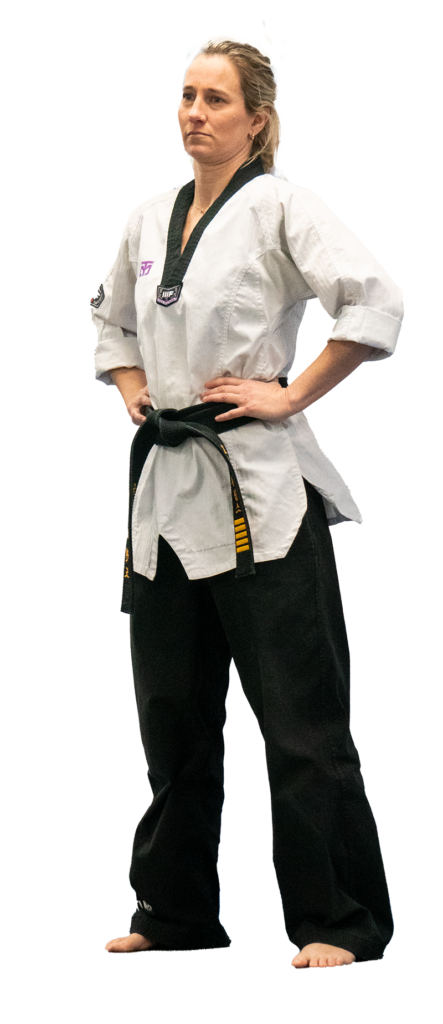
Six-year-old Lauren Phillips watched the demonstration at Parkville Days, enthralled, so the story goes. Afterward, she told her father she wanted to practice Taekwondo just like the people she saw. The details are fuzzy for her, but her father remembers, and her parents signed her up for a six-week course after that fateful first encounter. She figures they were simply trying to get it out of her six-year-old system. That was 34 years ago. And as Master Phillips reflects on that story now, sitting in her own school, she still has a sparkle in her eye and an underlying energy that conveys confidence.
“I feel very fortunate that I’m somebody who has known their whole life what they wanted to do, and I’ve done it. Most people don’t get to do that,” she says.
She couldn’t have done it without the support of her parents, especially her father, who owned an automotive repair shop. He even took special classes in the early years to get his coaching license. This literally put him in her corner, as she puts it. When she was competing, the family ensured that wherever the tournament was, that’s where the family vacation was. During this time, she built up an impressive record, winning national tournament titles such as the AAU Jr. Olympic Champion and the KAT International Champion in South Korea.
She earned her first-degree black belt in 1993 through the Kukkiwon organization and continued to teach Taekwondo for free while working through college. She didn’t necessarily want to go to college. Still, her father, she explains, owned an automotive repair shop, didn’t go to college, and always felt that formal education was one way to avoid some of the struggles he went through. She’s thankful for that wisdom and confesses that many of the skills she learned have been put to good use in her professional life.
“College life is pretty fun and a pretty good learning experience where you get to be an adult without really having to be an adult.” In 2005 she earned her Bachelor of Science in Health and Exercise Science with minors in East Asian Studies and Business from Truman State University. “I worked a couple of different jobs out of college before landing in the orthopedic office at Liberty Hospital. I was using my degree, which I was very happy about at the time.”
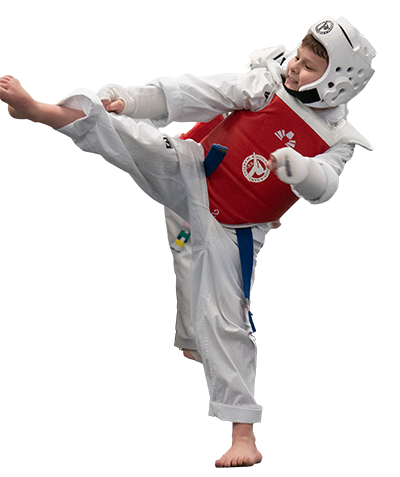
Starting Advantage Martial Arts
Living in an apartment with friends, teaching for the joy of it, and cleaning pools (before the orthopedic office job). Those years after college were a time to mature and gain experience. “They were the growing up years, and we all have that imposter syndrome sometimes,” she says. “I was waiting for a time when someone would take me seriously. But the economy tanking threw me off course a little.”
Things finally came together in 2011 after working with her instructor at Millennium Academy in Platte City. She credits her instructor with helping her to be patient. Wait for the right time, and find the right location. Phillips stresses the importance of good mentorship.
“That was a hard time because I was really chomping at the bit and wanting to do something, but at the same time, trying to take my time and make good choices. I had to have my instructor’s blessing. I wanted that relationship to stay good. Often times what happens is that someone leaves a school to open their own, and they take half the students with them. There are a lot of problems, and I didn’t want that. He and I worked together, and since I worked in Liberty and lived in this direction, Kearney seemed like an up-and-coming community that would be a good fit.”
It took a year to find the right place. “I asked about this location right here. They told me a number that was too much, and I said no. A year later, it was still available, and I came back and gave them my number, and that time it was a yes.” After that, it was time to rehabilitate the space, a shuttered video rental store, and attract students while still working the day job. Phillips gave herself a six-week window. She raced from town to town, put up signs, designed a basic website, and ripped out the old video store carpet. Then one evening, her first student walked through the door.
“I signed up my first student when my parents and I were in here painting. My parents were a big help with all that. The person just walked in. There was a sign out front. I was super excited. I think I offered them something free, or give me 50 bucks, and I’ll give you a uniform or something. And well, okay, I guess that works.”
It was vital for her to not quit her day job immediately, to take it slow and easy, to make sure it succeeded. Too many people, she explains, dive in with loans and employees and unnecessary expansion. Before they know it, they’re in over their heads and miss the simple practice they started with. “I worked at the orthopedics office eight to five and zipped straight up here to teach classes in the evening. I did that for a year until the new business could support me.”
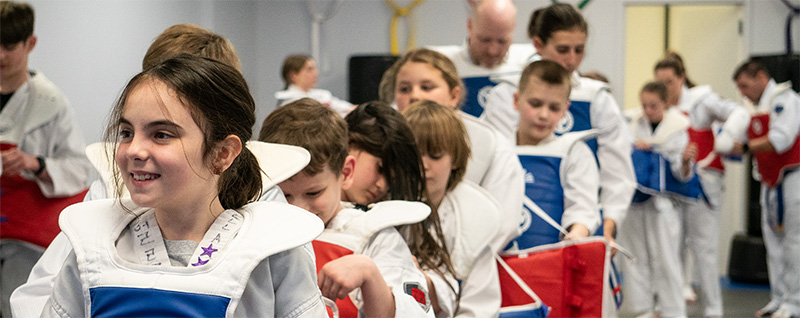
Anatomy of a Martial Arts School
Initially, it was a matter of answering phone calls and emails. “I was able to do my day job well while on every break, checking the phone, replying to emails, and calling people back.” Even now, her model is the same. Even with hundreds of students and a busy schedule, Phillips is quick to respond in person, by phone, or by email. Parents appreciate her unending effort, and the coaches for their attention to students and the lively, fun atmosphere.
“We have a focused but positive atmosphere; that’s my goal. If you can teach a child how to be focused and keep their hands to themselves when they are five or six, then you can make sure they have awesome technique when they’re 10, but you can’t really go the other way around.” Students start in the Little Ninjas program when they are as young as five and work on more than martial arts. It’s about learning discipline in the traditional sense beyond punching, forms, and kicking. Students learn good manners, respect, and how to support their community through volunteering, donating, and activities.
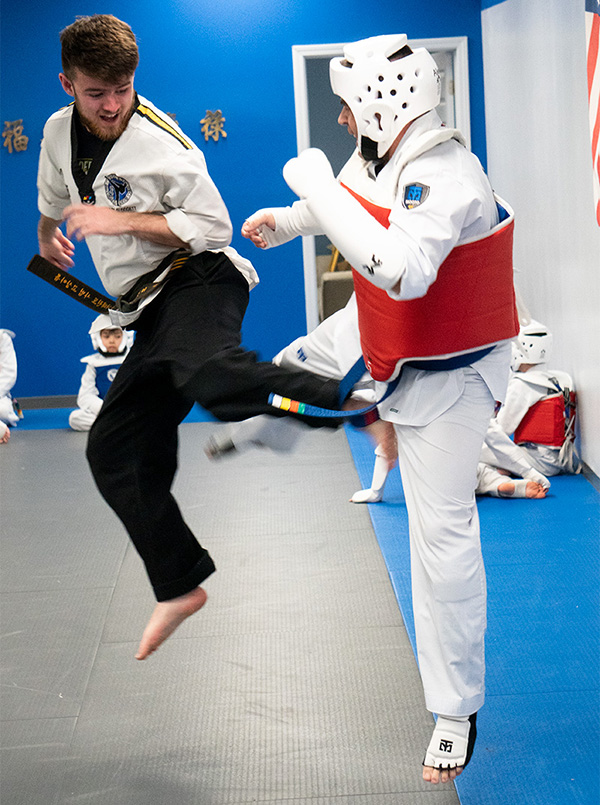
“When I first started, I had a 5:30 p.m. little kids’ class, then a 6 p.m. family, then adult 7 p.m. to 8 p.m. But then, as the classes got bigger and people became more advanced, the adult class had to go. So we don’t have an adult class now. The beginners eventually moved into advanced classes, and advanced students eventually moved into a black belt class. Compared to when I first started, I was only teaching two and a half hours a couple times a week, and then it grew to four or five hours every night.”
It was different when she was young, she explains. Working her way through the ranks, she was a child surrounded by adults with adult-style discipline. But most of her students are kids. From a business perspective, they are her main customers. Keeping it fun while focusing on the fundamentals is essential, she says. As parents watch their children train night after night, it’s plain to see that the model works. Instead of knuckle pushups and hours of punching in a horse stance, students (children and adults) smile while throwing kicks, punches, or working on forms. They show discipline while finding joy in the art.
Phillips, a fifth-degree black belt in the Kukkiwan organization, is considered a master and can own and operate her school under the Kukkiwan flag. “I have full latitude about what I want to teach and how I want to teach it. The basic forms and sparring rules are all the same, but I can decide what to teach, when, and what works best for my students. It’s not like being part of a franchise or cookie-cutter thing where you have to teach it exactly the same way.”
Knowing which school and style you are considering is important, she explains because Kukkiwan is the international standard and the style included in the Olympics. As parents, it’s hard to tell which school is which. In the United States, she says, you must have more certificates to cut hair than teach martial arts. Researching and choosing which school best suits a person’s needs and where the style originated from is essential. “Choose wisely when taking your kids to different schools.”
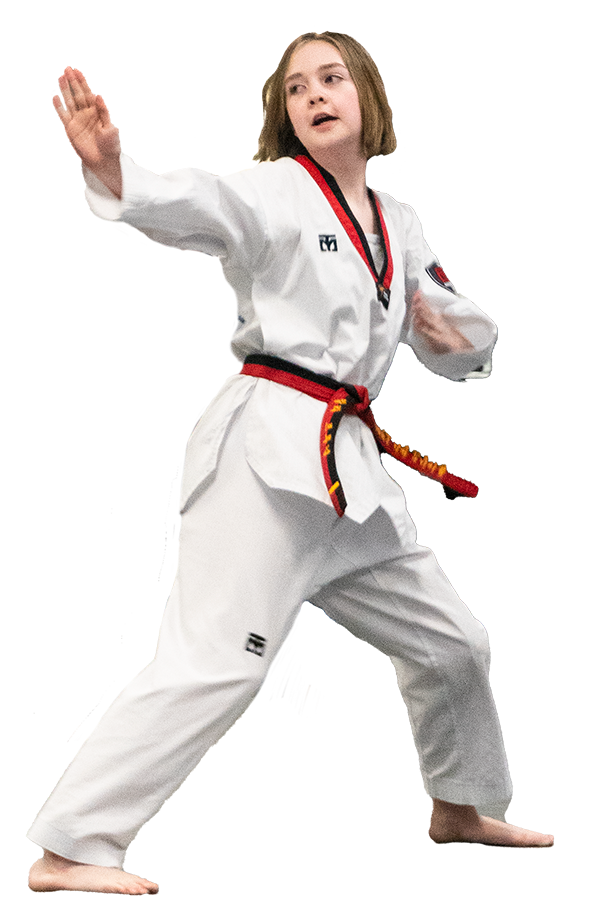
Running the Business
“Teaching martial arts for years without getting paid, without even considering getting paid, is really what made me realize that this was the path for me. Getting to do this full time with parents paying me to teach their children is a dream come true.”
On paper, which is never as scary as the real thing, Phillip’s business plan looked simple. Take your time, save money, keep your day job, find a place to rent, and give yourself six weeks to rehab, market, and open. Use signs, a basic website, and word of mouth. Of course, it was all a lot more exciting than it sounds. Since she was thoughtful, she says, if it fell on its face, she would have been fine. But it didn’t, and now she has hundreds of students, minimal overhead, and a single employee…herself. After twelve years of classes, each of her instructors has worked through the ranks, earning the honor of teaching as she did. Some of them are even around from the early years.
“We have five students who have been training with us for over ten years, so they started in the first couple months and are getting ready to train for 4th degree. At that point, we’ll have other masters here at the school. And I have little ninjas that started when they were four or five, and now they’re 13 and 14, watching over younger kids. Watching them grow is one of the best parts of the job.”
Her biggest advice? Decide what you are worth and stick to it. It’s easy to offer discounts and other things, but in the long run, that doesn’t work. Phillips ignores what other schools are doing or what they charge. She found a number that works for her and has stuck with it. She has two programs: once per week or twice per week. The rate is the rate, and everybody pays the same thing. No special deals and no opportunity for parents to feel slighted if someone else is getting a better rate.
Advantage Martial Arts also doesn’t sign anyone to long-term contracts, which many other schools, including dance and gymnastics, do. Phillips’ approach is to keep the revenue stream simple and focus on the students. To start your own school, she says, you have to put in the hard work, prepare, and be willing to sacrifice some time and energy in the short term to get what you want in the long term. By offering the first class free, she knows that new parents aren’t looking at equipment or the space. They aren’t paying for inanimate objects; they’re paying for good teachers and, most importantly, a business owner and master they can trust.
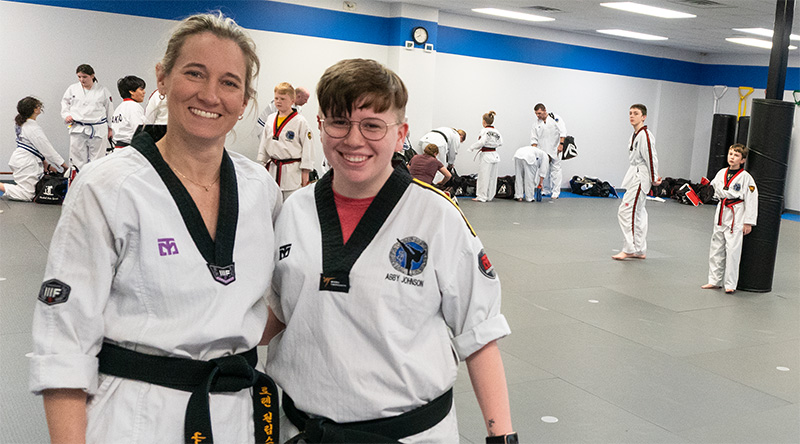
The model works. It’s evident from the first few minutes of a class that the dedication, values, character, and effort displayed by Master Phillips and her coaches inspire the same in others. As Abby Johnson, a black belt coach with many years of training under Master Phillips, puts it, “Master Phillips is the best. I’d do anything for her!”
Phillips describes her sense of identity as intertwined with martial arts, especially since she started at such a young age. “I’d say to my friends and family something like, ‘I feel like this has happened so fast,’ and they’d be like, ‘what are you talking about? You’ve been getting ready for this since you were six years old.’”




